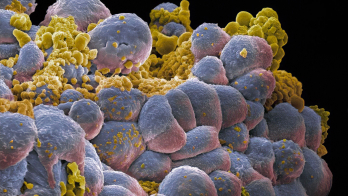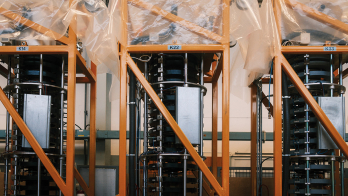The invention and development of electron cooling by Gersh Budker’s team in Novosibirsk in the late 1960s and early 1970s set physics on a new route to discovery. Electron cooling has become crucial for controlling disorganized particle beams, and new electron cooling techniques could extend its range of applicability.

A Medium Energy Electron Cooling workshop (MEEC98) organized recently by the Joint Institute for Nuclear Research (JINR), Dubna, brought together specialists from all over the world, including many of the Novosibirsk cooling pioneers. From Gersh Budker’s initial idea, electron cooling has undergone more than 30 years development. 10 cooler rings are in operation and electron cooling has become a routine tool.
Simon van der Meer’s stochastic cooling scheme has been the technique of choice for controlling proton and antiproton beams of energy higher than about 0.5 GeV (even though its cooling time increases with the intensity). Higher intensities have meant that electron cooling (less dependent on the particle intensity) has had to rise to a new challenge.
In the standard scheme, an electrostatically accelerated (maximum energy 300 keV), magnetically confined electron beam at low temperature is merged with an ion beam in a straight section of the storage ring. The progress concerns mainly an increase of the magnetic field quality and the generation of an intense electron beam at extremely low temperature beam expansion by a factor of up to 8 (at SIS, GSI Darmstadt), 20 (ASTRID, Aarhus), 25 (TSR, Heidelberg), 100 (Cryring, Stockholm and TARN II, Tokyo).
The first proposal to use electron cooling with MeV-range electrons came from Novosibirsk (Kuksanov, Meshkov, Salimov et al., 1986) where a prototype at 1 MeV electron energy was constructed. A 1 amp DC electron beam was obtained in an energy recuperation scheme.
MEEC’s first
The first MEEC project, based on a proposal by T Ellison at Bloomington, Indiana, aimed to increase the luminosity in the ill-fated US Superconducting Supercollider by electron cooling 12 GeV protons in the Medium Energy Booster for that project. Presently the electron cooling of GeV ions is an integral part of a number of modern projects.
At Fermilab, the Tevatron luminosity upgrade programme includes the electron cooling of 9 GeV antiprotons in the Recycler ring to compensate for beam heating during stacking. Electron cooling of 1020 GeV protons in the PETRA storage ring at DESY aims to halve the emittance and boost luminosity in the downstream HERA collider. Electron cooling is also planned to boost luminosity in electronion and ionion collisions at ion energies up to 1.5 GeV/nucleon for light ions and 3.5 GeV for protons in the MUSES project of the Japanese RIKEN radioactive ion beam factory (construction of the first stage of which began in 1998).







